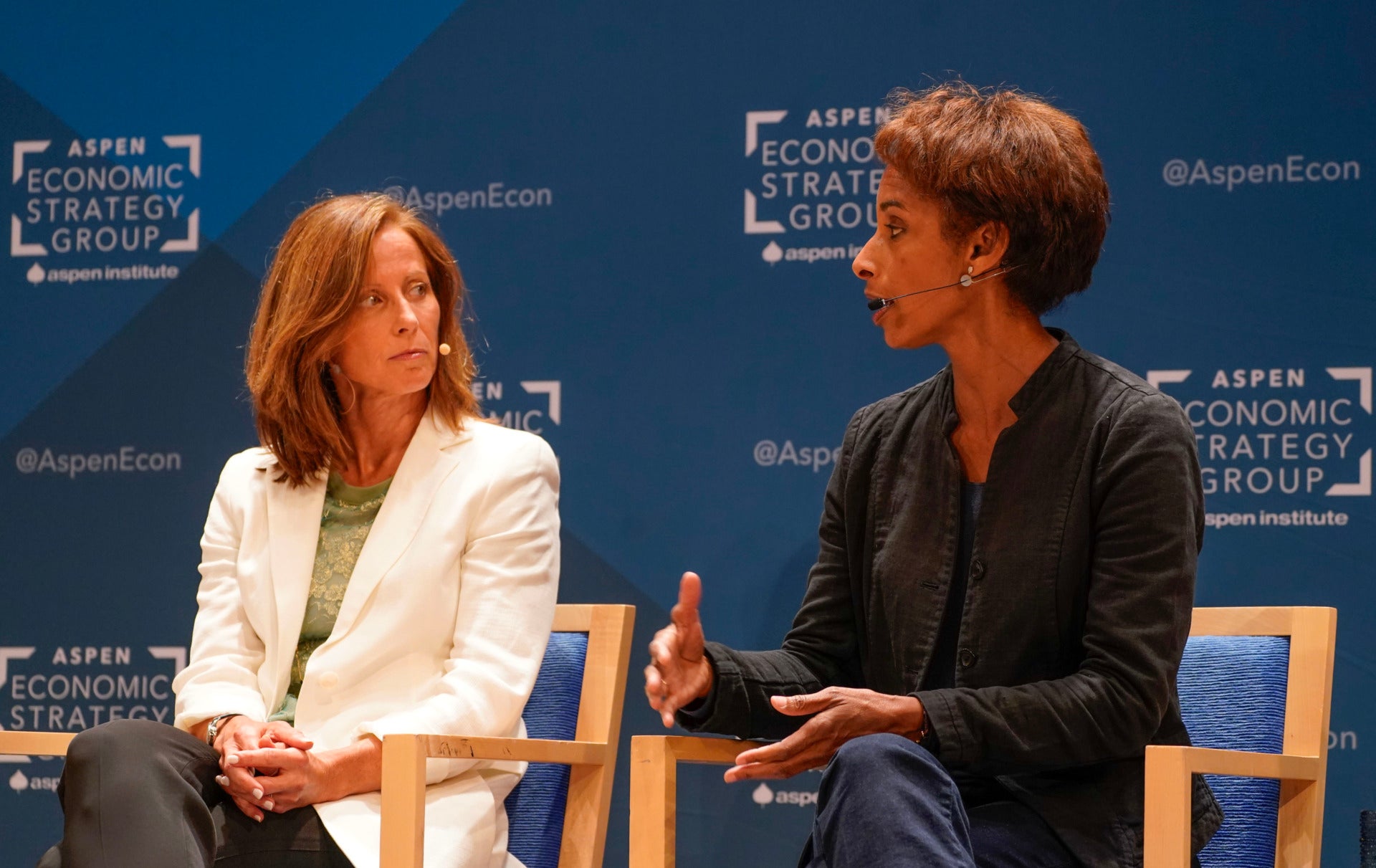First report from the Collaborative for Equitable Retirement Savings highlights opportunities to address race and gender disparities in 401(k) plans
Retirement savings represent the second-largest source of household wealth in the United States. With $10.4 trillion in assets, the workplace retirement savings system—leveraging the power of automatic paycheck deduction, compounding rates of return generated by the stock market, and diversified investing in target date funds—has demonstrated its potential to generate retirement security and household wealth. This is why the Aspen Institute Financial Security Program named it as one of the eight most important wealth-building strategies in The New Wealth Agenda.
But our retirement savings system isn’t working the same for everyone. As of 2019, 57 percent of white families had savings in retirement accounts, compared with only 35 percent of Black families and 26 percent of Hispanic families. White families had, on average, a retirement account balance of $168,000, not including pensions, while the average balances for Black and Hispanic families were $38,300 and $27,300, respectively.
To realize the promise of inclusive retirement savings, we have work to do. First, we have to expand access to the 57 million workers—disproportionately workers of color, women, and workers earning lower wages—who do not currently have a workplace retirement savings plan. Second, we have to ensure that we’re providing access to a tool that works for everyone. But we aren’t there yet: Even among workers who do have access to a plan, we see significant differences in balance accumulation by race and gender.
Why doesn’t our retirement saving system generate the same account balances for Black and Hispanic workers? Do we really know? And, what might be possible if we did?
In 2023, in collaboration with Morningstar Retirement and DCIIA (The Defined Contribution Institutional Investment Association), we launched The Collaborative for Equitable Retirement Savings (CFERS) to uncover the answers to these questions. At the Collaborative, we partner with leading employers to combine anonymous employee demographic data with retirement plan transactional data to analyze how plans are currently working for savers and what opportunities may exist to make them perform more equitably and efficiently.
The longitudinal database we are building will allow us to evaluate the effect of plan design and benefits changes over time, propelling us toward a future of meaningfully increased balances for all workers—especially for the Black, Hispanic, and female workers not experiencing the same savings outcomes today.
Our report Same Income, Same 401(k), Different Account Balance: The Critical Role of Retirement Plan Design in Addressing Racial and Gender Retirement Savings Gaps gives us the starting point for addressing plan design and identifying the critical benefits that could be deployed alongside these plans to maximize the system’s potential.
Our topline takeaway is that income alone doesn’t explain these differences in contributions by race and gender. Other key findings include:
- Black and Hispanic females contribute lower percentages of their salaries than their counterparts after controlling for age, salary, tenure, and plan design variables.
- Black and Hispanic workers withdraw a larger portion of their account balances before retirement and take these pre-retirement withdrawals more frequently than their white counterparts. These differences grow more extreme the closer people get to retirement.
- Black participants have a higher probability of having an outstanding loan than their white counterparts. At ages 55-59, both Black men and Black women have a 49 percent probability of having a retirement plan loan outstanding – more than any other group.
- The report’s simulation results indicate that eliminating pre-retirement withdrawals would substantially mitigate race and gender disparities, particularly for early- and mid-career 401(k) participants.
What’s Ahead
This first CFERS report signals that minor plan and benefit changes can likely translate to significant increases in the retirement savings balances of Black and Hispanic households in particular. With this early data in hand, in 2024 we will more deeply explore the underlying financial needs driving these dynamics.
Also, later this year, we will convene these first-mover employers, alongside a broad set of experts, to implement and test solutions that can lead to increased account balances for Black, Hispanic, and female workers. And as we add new employers to the database, we plan to publish analysis of the impact of other plan design elements—like asset allocation—on balance accumulation, as well as use the database to project the impact of policies like the Saver’s Match.
Continuing this level of cross-sector collaboration, testing, and innovation will help our retirement savings system realize its promise in Americans’ financial lives. Read a summary brief, access the full report, and register for a webinar on March 27 at 12 p.m. CT/1 p.m. ET about the outcomes of the first CFERS paper.
The Morningstar name and logo are registered marks of Morningstar, Inc. Morningstar Retirement offers research- and technology-driven products and services to individuals, workplace retirement plans, and other industry players. Associated advisory services are provided by Morningstar Investment Management LLC, a registered investment adviser and subsidiary of Morningstar, Inc.
The Aspen Institute Financial Security Program’s work on the Collaborative for Equitable Retirement Savings is supported by Prudential Financial.

